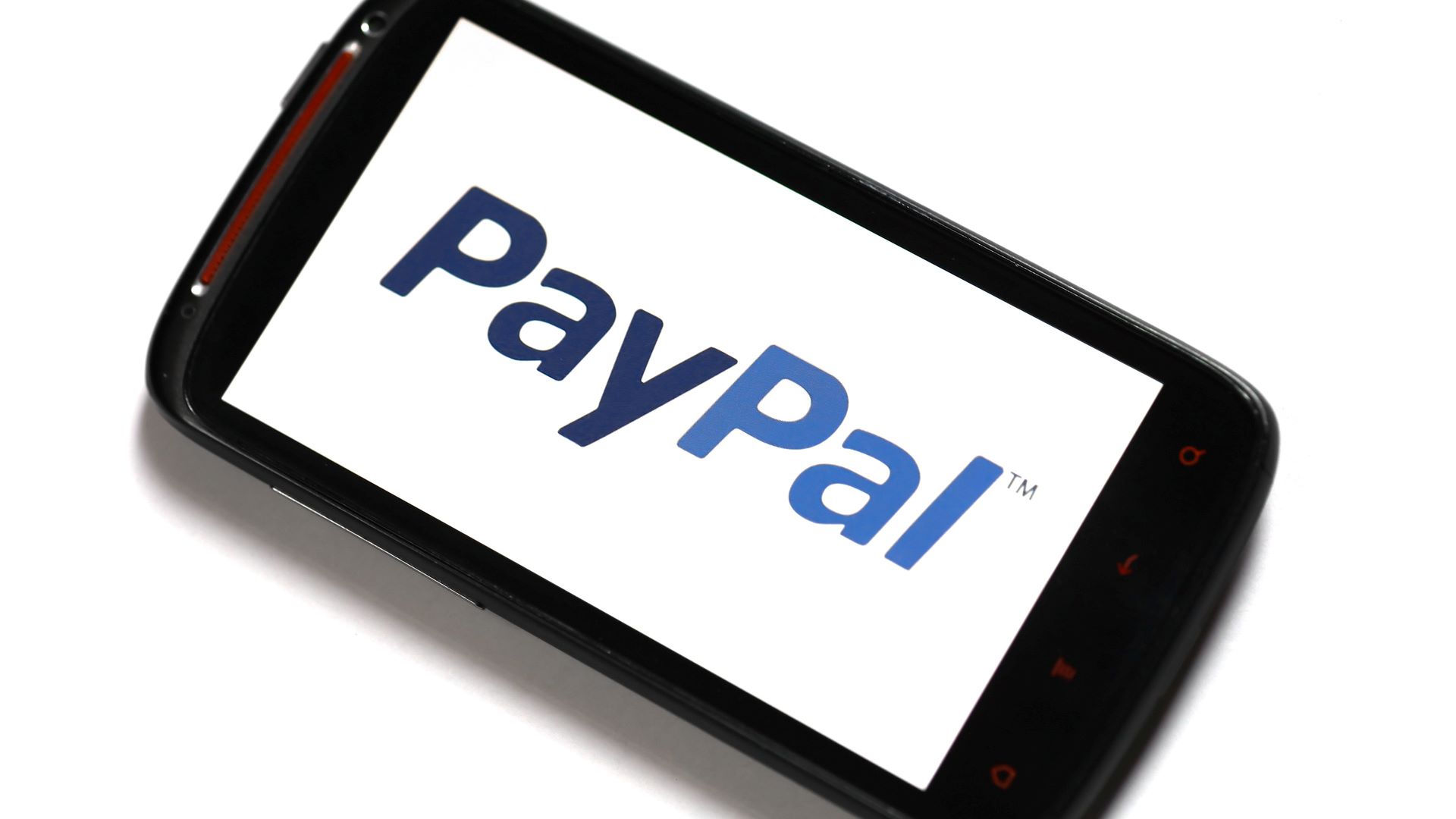Home>Finance>Why Should You Pay More Than The Minimum Payment


Finance
Why Should You Pay More Than The Minimum Payment
Published: February 25, 2024
Learn why paying more than the minimum payment is crucial for your financial well-being. Discover the benefits of managing your finances wisely.
(Many of the links in this article redirect to a specific reviewed product. Your purchase of these products through affiliate links helps to generate commission for LiveWell, at no extra cost. Learn more)
Table of Contents
Introduction
Understanding the Importance of Paying More Than the Minimum Payment
Paying off debt can be an overwhelming and challenging task, especially when faced with high-interest rates and substantial outstanding balances. Many individuals find themselves trapped in the cycle of making only the minimum payment on their loans or credit cards, which can prolong the repayment period and result in exorbitant interest charges. In this article, we will delve into the critical reasons why paying more than the minimum payment is not only financially prudent but also essential for achieving long-term financial stability.
By examining the implications of sticking to the minimum payment and the benefits of exceeding this threshold, readers will gain valuable insights into how this simple yet powerful strategy can significantly impact their financial well-being. Whether it's tackling credit card debt, student loans, or other forms of borrowing, understanding the significance of paying more than the minimum can pave the way for a more secure and prosperous financial future.
Throughout this article, we will explore the true cost of paying only the minimum, the advantages of increasing payments, and practical strategies to empower individuals to take control of their debt repayment journey. By shedding light on these crucial aspects, readers will be equipped with the knowledge and motivation to break free from the shackles of minimum payments and work towards becoming debt-free. Let's embark on this enlightening exploration of why paying more than the minimum payment is a game-changer in the quest for financial freedom.
Understanding the Minimum Payment
When it comes to managing debt, understanding the concept of the minimum payment is pivotal. The minimum payment is the lowest amount that a borrower must pay each month to keep their account in good standing. It is typically calculated as a percentage of the outstanding balance, often with a minimum fixed amount, and is set by the lender or creditor. While making the minimum payment may seem like a manageable and convenient option, it is essential to grasp the implications of adhering to this approach.
By making only the minimum payment, borrowers are primarily covering the interest accrued on the outstanding balance, with only a small portion contributing to reducing the principal amount. This means that the debt repayment process is prolonged, and borrowers may find themselves trapped in a cycle of persistent debt. Furthermore, the longer it takes to pay off the balance, the more interest accrues, leading to a higher overall repayment amount. This can result in a significant financial burden and hinder individuals from achieving their long-term financial goals.
It is crucial for individuals to recognize that the minimum payment is designed to benefit the lender or creditor, as it allows them to maximize interest earnings over an extended period. While it may appear to offer temporary relief by keeping the account in good standing, it ultimately leads to prolonged indebtedness and increased interest expenses. Therefore, gaining a clear understanding of the minimum payment and its implications is the first step towards making informed and strategic decisions regarding debt repayment.
By comprehending the mechanics of the minimum payment and its impact on overall debt management, individuals can proactively seek alternative approaches that will expedite the repayment process and minimize interest costs. In the subsequent sections, we will delve deeper into the true cost of paying only the minimum and explore the compelling reasons to surpass this threshold in pursuit of financial freedom.
The Cost of Paying Only the Minimum
When borrowers opt to pay only the minimum amount due on their debts, they inadvertently subject themselves to a myriad of long-term financial repercussions. While it may provide temporary relief by meeting the immediate payment obligation, the cumulative cost of adhering to this practice can be staggering.
One of the most significant drawbacks of paying only the minimum is the prolonged repayment period. By allocating only a small portion of the payment towards the principal balance, borrowers extend the time it takes to clear the debt. This extended timeline translates to a higher overall interest cost, as interest continues to accrue on the outstanding balance over an extended period. Consequently, individuals may find themselves paying a substantial amount in interest alone, further impeding their journey towards financial freedom.
Moreover, the compounding effect of interest can significantly inflate the total amount repaid. As interest continues to accumulate on the unpaid balance, borrowers may end up paying a significantly larger sum than the initial amount borrowed. This not only exacerbates the financial strain but also diminishes the potential for utilizing those funds towards wealth-building or other essential financial goals.
Additionally, relying solely on minimum payments can adversely impact credit scores. Consistently carrying high balances and making only minimum payments can signal financial distress to credit reporting agencies, potentially lowering credit scores. A lower credit score can lead to higher interest rates on future borrowing, further exacerbating the financial burden.
Furthermore, the psychological toll of being trapped in a cycle of minimum payments should not be underestimated. The stress and anxiety resulting from persistent debt can take a significant toll on an individual’s overall well-being, affecting their mental and emotional health.
Understanding the true cost of paying only the minimum is crucial for individuals to make informed decisions about their debt repayment strategies. By recognizing the long-term financial implications of this approach, borrowers can gain the motivation and insight needed to explore more effective and efficient methods of clearing their debts.
Benefits of Paying More Than the Minimum
Choosing to pay more than the minimum amount due on debts can yield a multitude of compelling benefits that extend far beyond immediate financial relief. By surpassing the minimum payment threshold, individuals can significantly expedite their journey towards debt freedom and pave the way for enhanced financial well-being.
One of the most significant advantages of paying more than the minimum is the accelerated reduction of the principal balance. By allocating larger sums towards the principal, borrowers effectively reduce the outstanding debt at a faster pace. This not only shortens the overall repayment period but also mitigates the total interest accrued, resulting in substantial long-term savings.
Moreover, paying more than the minimum can lead to a considerable reduction in interest costs. By expediting the repayment process, borrowers minimize the duration over which interest accrues, ultimately resulting in lower total interest payments. This liberated capital can then be redirected towards savings, investments, or other financial priorities, thereby fostering a more secure financial future.
Additionally, consistently paying more than the minimum can positively impact credit scores. By demonstrating responsible and proactive debt management, individuals can enhance their creditworthiness, potentially leading to improved credit scores. A higher credit score can open doors to favorable interest rates on future loans and credit, enabling individuals to access more affordable financing options.
Beyond the financial implications, paying more than the minimum can alleviate the psychological burden associated with persistent debt. Witnessing tangible progress in reducing the outstanding balance can instill a sense of empowerment and motivation, fostering a positive outlook on the journey towards financial freedom.
Furthermore, by embracing a proactive approach to debt repayment, individuals can cultivate valuable financial habits and discipline that extend beyond the immediate context. This can lay the groundwork for enhanced financial literacy, prudent money management, and a sustainable approach to achieving long-term financial goals.
By recognizing and harnessing the array of benefits associated with paying more than the minimum, individuals can chart a course towards accelerated debt repayment, reduced interest costs, and an overall strengthened financial position. In the subsequent section, we will explore practical strategies for implementing this proactive approach to debt clearance.
Strategies for Paying More Than the Minimum
Implementing strategies to pay more than the minimum on debts requires thoughtful planning and a proactive approach to debt management. By employing effective tactics and leveraging available resources, individuals can expedite their debt repayment journey and minimize interest costs, thereby paving the way for enhanced financial stability.
One of the most straightforward yet impactful strategies is to allocate windfalls and bonuses towards debt repayment. Unexpected financial gains, such as tax refunds, work bonuses, or monetary gifts, can serve as valuable resources for accelerating debt clearance. By directing these windfalls towards paying down the principal balance, borrowers can make significant strides in reducing their overall indebtedness.
Another effective approach is to create a structured repayment plan that prioritizes paying more than the minimum. By delineating a specific portion of income towards debt repayment and adhering to a predetermined schedule, individuals can ensure consistent and proactive reduction of their outstanding balances. This structured approach fosters discipline and accountability, driving tangible progress in debt clearance.
Furthermore, individuals can explore the option of increasing their income through supplementary sources, such as freelance work, part-time endeavors, or side businesses. The additional income generated from these ventures can be channeled directly towards debt repayment, accelerating the reduction of outstanding balances and minimizing interest costs.
Consolidating high-interest debts into a single, lower-interest loan can also be a strategic move to facilitate more efficient debt repayment. By securing a more favorable interest rate, individuals can reduce the overall interest costs and streamline their repayment efforts, enabling them to allocate more funds towards paying down the principal balance.
Moreover, leveraging balance transfer offers with lower or zero-interest rates can provide a temporary reprieve from high-interest charges, allowing individuals to channel more funds towards reducing the principal amount. However, it is crucial to approach balance transfers with careful consideration of associated fees and the impact on credit scores.
By combining these strategic approaches and customizing them to align with individual financial circumstances, borrowers can proactively surpass the minimum payment threshold and expedite their journey towards debt freedom. These proactive strategies not only minimize interest costs but also instill valuable financial discipline, setting the stage for long-term financial well-being.
Conclusion
Embarking on the path to financial freedom requires a proactive and informed approach to debt management. By understanding the implications of paying only the minimum, individuals can gain valuable insights into the detrimental long-term effects of this practice. The prolonged repayment period, exorbitant interest costs, and potential impact on credit scores underscore the urgency of surpassing the minimum payment threshold.
Conversely, paying more than the minimum offers a myriad of compelling benefits that extend beyond immediate financial relief. From accelerated debt reduction and minimized interest costs to enhanced creditworthiness and psychological well-being, this proactive approach lays the foundation for a strengthened financial position and a more secure future.
By implementing strategic tactics such as allocating windfalls towards debt repayment, creating structured repayment plans, increasing supplementary income, and exploring debt consolidation options, individuals can expedite their debt clearance journey and minimize interest expenses. These proactive strategies not only facilitate efficient debt repayment but also nurture valuable financial habits and discipline that transcend the immediate context.
Ultimately, the decision to pay more than the minimum represents a transformative shift towards taking control of one’s financial destiny. It empowers individuals to break free from the shackles of persistent debt, cultivate prudent financial habits, and work towards achieving long-term financial goals.
As individuals embrace the proactive approach of paying more than the minimum, they not only expedite their journey towards debt freedom but also lay the groundwork for a more empowered and financially resilient future. By harnessing the array of benefits associated with this approach, individuals can pave the way for enhanced financial stability and a renewed sense of control over their financial well-being.
In conclusion, the decision to pay more than the minimum transcends mere debt repayment; it signifies a conscious commitment to reclaiming financial freedom and charting a course towards a more prosperous and secure future.














